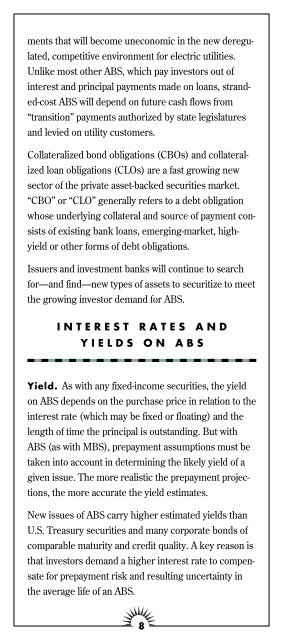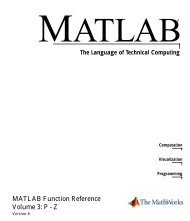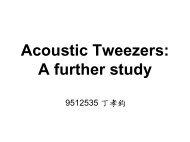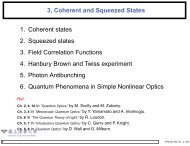assetbacked Pages
assetbacked Pages
assetbacked Pages
You also want an ePaper? Increase the reach of your titles
YUMPU automatically turns print PDFs into web optimized ePapers that Google loves.
ments that will become uneconomic in the new deregulated,<br />
competitive environment for electric utilities.<br />
Unlike most other ABS, which pay investors out of<br />
interest and principal payments made on loans, stranded-cost<br />
ABS will depend on future cash flows from<br />
“transition” payments authorized by state legislatures<br />
and levied on utility customers.<br />
Collateralized bond obligations (CBOs) and collateralized<br />
loan obligations (CLOs) are a fast growing new<br />
sector of the private asset-backed securities market.<br />
“CBO” or “CLO” generally refers to a debt obligation<br />
whose underlying collateral and source of payment consists<br />
of existing bank loans, emerging-market, highyield<br />
or other forms of debt obligations.<br />
Issuers and investment banks will continue to search<br />
for—and find—new types of assets to securitize to meet<br />
the growing investor demand for ABS.<br />
INTEREST RATES AND<br />
YIELDS ON ABS<br />
Yield. As with any fixed-income securities, the yield<br />
on ABS depends on the purchase price in relation to the<br />
interest rate (which may be fixed or floating) and the<br />
length of time the principal is outstanding. But with<br />
ABS (as with MBS), prepayment assumptions must be<br />
taken into account in determining the likely yield of a<br />
given issue. The more realistic the prepayment projections,<br />
the more accurate the yield estimates.<br />
New issues of ABS carry higher estimated yields than<br />
U.S. Treasury securities and many corporate bonds of<br />
comparable maturity and credit quality. A key reason is<br />
that investors demand a higher interest rate to compensate<br />
for prepayment risk and resulting uncertainty in<br />
the average life of an ABS.<br />
8<br />
Once securities are trading in the secondary market,<br />
the spreads between ABS and Treasuries or comparable<br />
corporate bonds may widen or narrow depending<br />
on market conditions, including the direction of interest<br />
rates in the economy, the number of issues coming<br />
to market and factors specific to each type of ABS. For<br />
example, a rising level of personal bankruptcies may<br />
cause the perception of risk in credit card ABS to<br />
increase, requiring higher yields to entice investors.<br />
Average Life. Also called the weighted average life,<br />
this is the time-weighted average maturity of a stream<br />
of principal cash flows. As noted above, it is the usual<br />
time dimension cited in the selling and trading of amortizing<br />
ABS. Average life can readily be estimated for a<br />
security that pays principal in a single payment. For an<br />
amortizing structure, the average life varies, depending<br />
on the prepayment assumptions. Based on the structure<br />
of a particular ABS and the type of underlying collateral<br />
used, ABS “tranches”—separate classes of securities—may<br />
be created with average lives that correspond<br />
to the maturity and duration requirements of a<br />
broad range of investors—from short-term money market<br />
tranches to long-term assets.<br />
Total Return. This is the overall return on an investment,<br />
usually calculated on a one-year basis, when all<br />
interest, principal payments, reinvestment income and<br />
any capital gains or losses are factored in.<br />
CREDIT QUALITY AND<br />
CREDIT ENHANCEMENT<br />
CREDIT RATINGS<br />
ABS are generally rated by one or more of the following<br />
rating agencies: Standard & Poor’s Rating Services,<br />
Moody’s Investors Service, Fitch IBCA or Duff &<br />
9
















